Sean's space
August Recap
Monthly update of Korean language progress (weeks 8-11)
Aug 31, 2022
안녕! This is the first monthly update where I’ll keep track of my Korean achievements/challenges, food experiences, favorite shows/movies, and other cultural observations from this immersion.
Completed in August:
August was great! I’m still in the “noob gains” phase, making progress each day and not experiencing any plateaus… yet. My daily language immersion practice has been going well, and my vocabulary continues to grow. Interestingly, the vocabulary gets easier and easier the more words I know because I can put the new words in a Korean context. For example, today I came across the word 후식, and I didn’t even need to look it up to guess the meaning. 후 usually means “after” something, and 식 usually relates to a meal, so I was able to correctly infer that 후식 means “dessert.” Also, the more words I know, the easier it is to create example sentences for new words, which in turn helps the new vocab to stick. My Anki flashcard deck has 1,220 words so far (not including conjugations or loan words), and I think I’m about where I should be for my goal of around 5,000 words when I move to Korea.
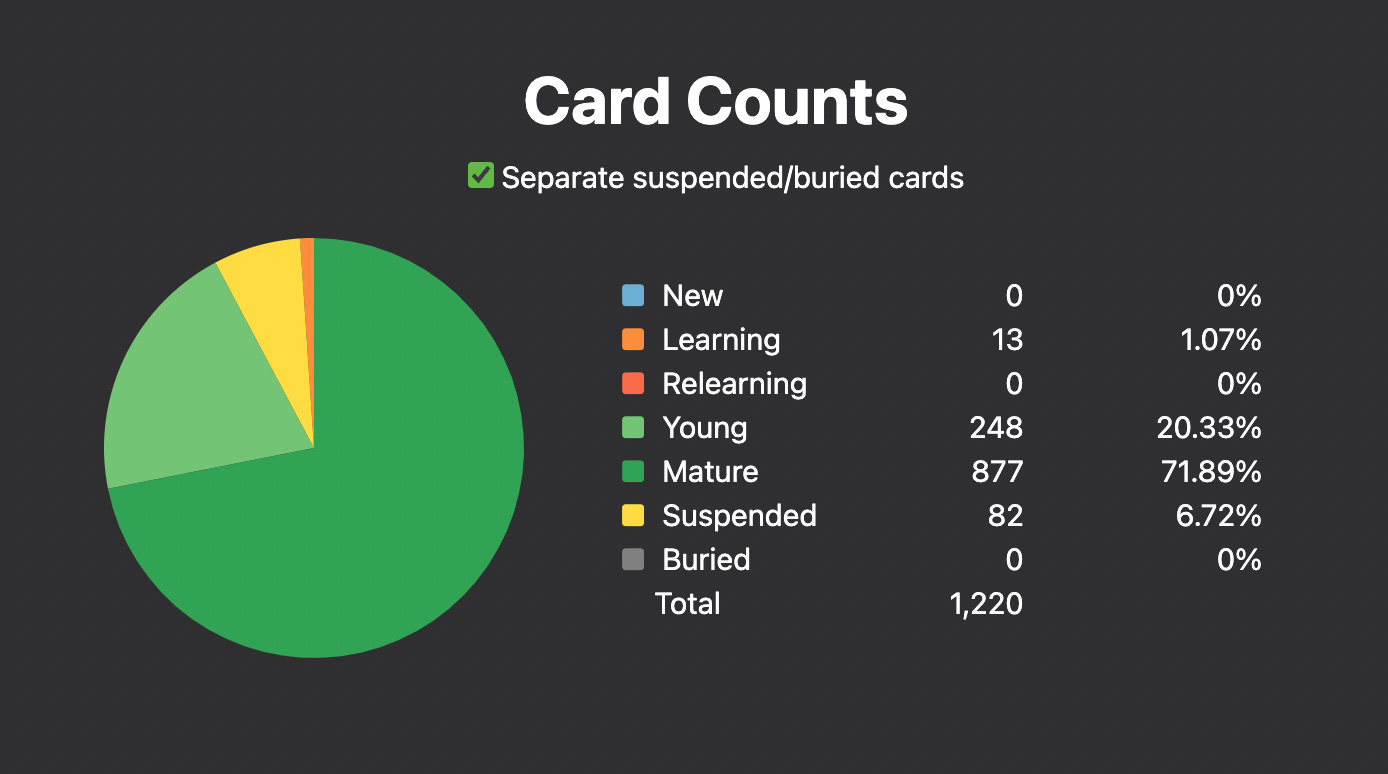
The screenshot below shows my progress from August. The DLI chapters are what I use in class each day, and the rest are other materials I’m using to immerse myself and study. I complete my Anki flashcard deck review every day, but I vary the other resources to keep things interesting and see the same grammar points, etc., from multiple angles.
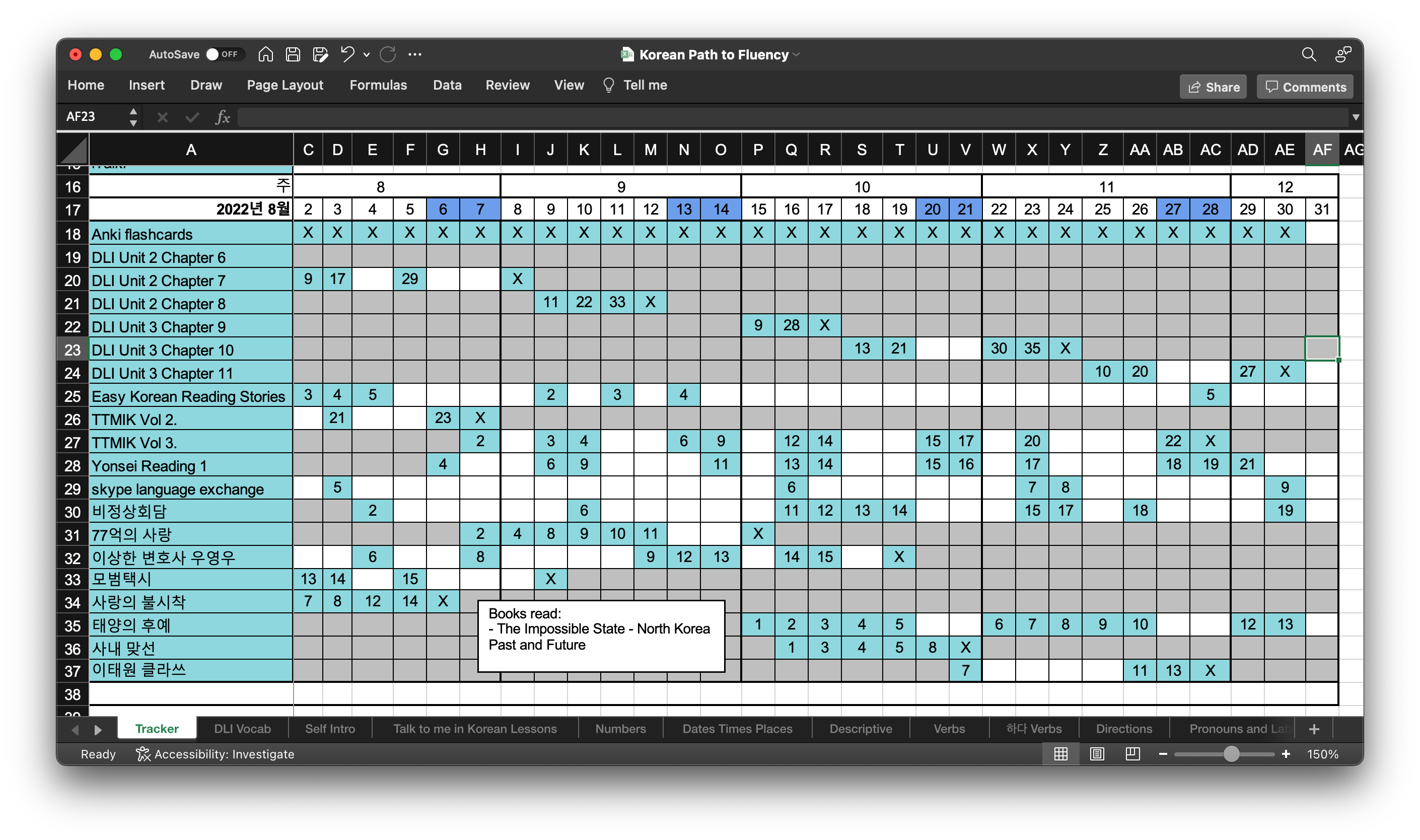
Korean progress so far:
-
Writing: I can write quickly by hand, but spelling in Korean is challenging for me. There are so many irregular sounds (ㅂ,ㅎ,ㄷ, etc.), and while I’m able to read them out loud just fine, I frequently forget the spelling in my head to write them correctly. I think I’m at the point where I should start journaling in Korean to just get more full sentence writing practice. Typing is also frustratingly slow, so I need to set aside some dedicated typing practice soon.
-
Reading: By far my strongest area—I can read quickly and successfully translate from Korean into English (for the material I’ve covered so far, that is). The funny part with reading is I get hung up on loan words of all things! Loan words should be the easiest words—essentially an English word transformed into Korean, like 로스앤젤레스 (rosseuenjelresseu) for Los Angeles—but they always seem so out of place within Korean text. Names also still stump me as I’m not familiar with many Korean names yet, so they aren’t obviously names unless I know the context or if they have a very common last name, like 김 or 이.
-
Listening: Listening is my weakest area, but watching so much Korean media with Korean subtitles on is definitely helping me parse out words when spoken quickly. The hardest part is trying to remember details from early in a recording as I’m constantly trying to keep up with translating. It seems to be a common challenge, but I tend to get stuck on a word I don’t know and then miss the next sentence or so while I try to reset.
-
Speaking: I’m told my speaking ability is pretty good so far, but I have trouble coming up with new sentences on the fly using the newer grammar forms I’ve learned. If I’m regurgitating things I’ve said before or am reading from notes, I’m fine, but stringing together multiple new thoughts on the fly is still difficult for me. I think journaling in Korean will help with this as well. Additionally, my pronunciation with subtle differences is sometimes wrong, like 곳 vs 것 (“place” and “thing” sound very similar and can cause confusion!), but I’m working on these with my teacher.
KBBQ
Cooking is one of my hobbies, so I’m using my cooking time to learn more about Korean food and practice using the language in a fun context. For now, I bought two of Maangchi’s cookbooks (in English) to work through, and I’ve made a few delicious recipes already. I’ve even been bringing homemade Korean food in for lunch for my teacher to sample and critique, which has been fun. Interestingly, the vocabulary related to cooking and food comes easiest to me, which confirms how important learning in context and having a genuine interest is for learning a new language!
So far, my favorite “Korean food” is the simple marinated grilled meats and side dishes that come with Korean BBQ, and her cookbooks had plenty of simple side dish recipes that I wanted to try. I didn’t want to cook Korean BBQ for just myself though (it’s a lot of work!), so I invited some friends over to host a KBBQ night on my apartment’s roof. It was fun to practice making various side dishes and condiments for ssam wraps, and drinking a few bottles of soju helped make everything taste even better.
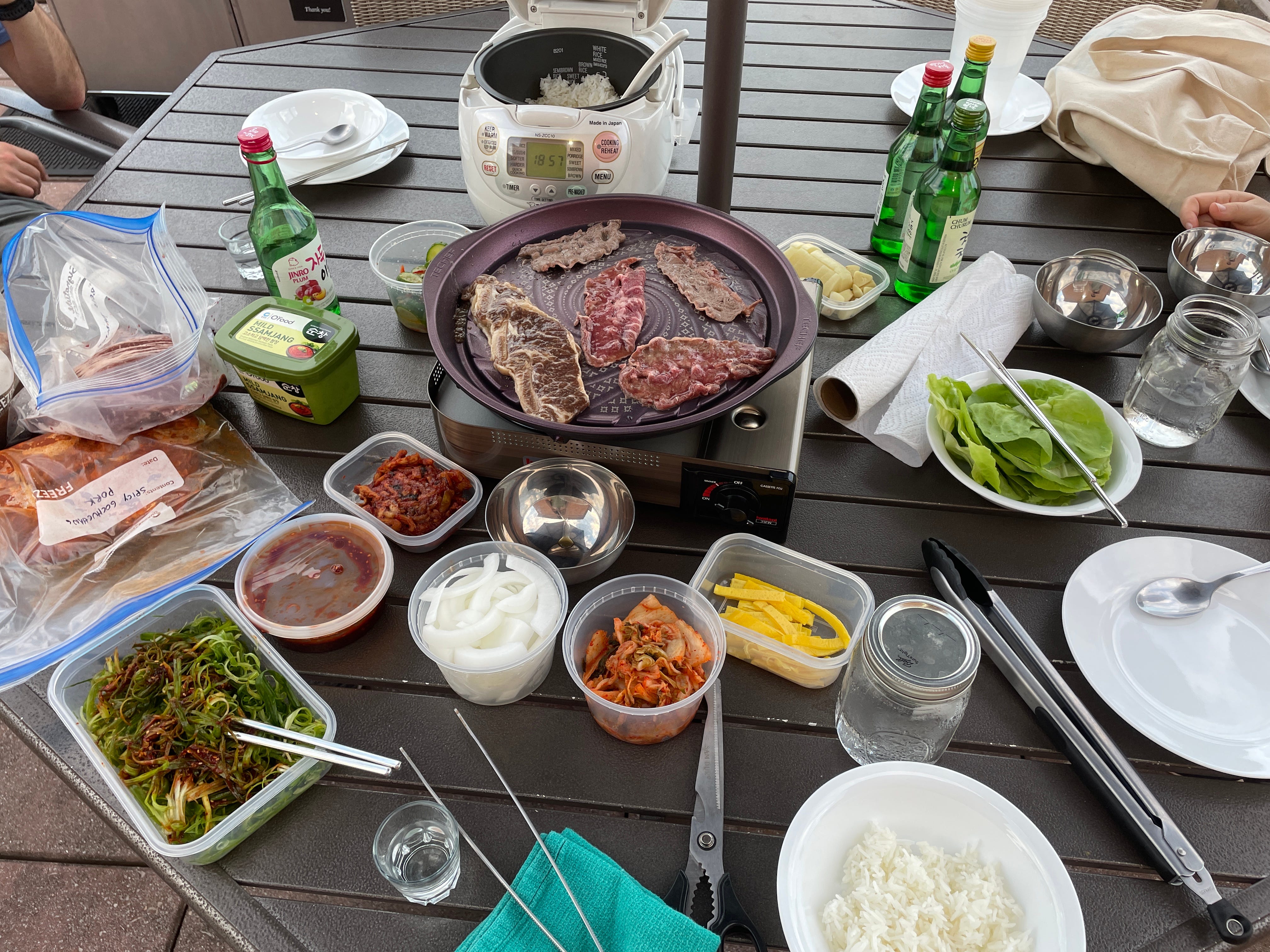 KBBQ night! spicy pork bulgogi, thinly sliced beef blade, LA style galbi, ssamjang, kimchi, rice, egg yolk strips, pickled radish, marinated/seasoned pickled radish, sautéed cucumber salad, onions, garlic, scallion salad, and plenty of soju
KBBQ night! spicy pork bulgogi, thinly sliced beef blade, LA style galbi, ssamjang, kimchi, rice, egg yolk strips, pickled radish, marinated/seasoned pickled radish, sautéed cucumber salad, onions, garlic, scallion salad, and plenty of soju
Essentially, you just grab a piece of lettuce, smear some ssamjang on it (a must!), add a piece of whatever hot meat you want, add a few vegetables on top, wrap it all up in a lettuce bundle, and shove the whole thing in your mouth. So good.
Drama or movie highlight
I knew Korea was producing high-quality movies and shows (Parasite, Squid Game, etc.), but I had no idea just how much I’d enjoy the dramas. Most of the popular shows are even on Netflix! I’ll highlight particularly good shows or movies in this newsletter, as there are many shows I wish I knew about even before starting to learn Korean.
I assumed I’d be into the action/thriller genre like I am for western media, but Koreans sure know how to tug on my heart with their usually over-the-top melodramas. I love how innocent the dramas are compared to what I’m used to… a kiss or a confession of love are huge moments, but it somehow just works.
My favorite so far was 사랑의 불시착 (Crash Landing On You, available on Netflix). It’s about a forbidden and dangerous love between a North Korean Captain and a successful chaebol heiress from Seoul. This show was extremely popular throughout Asia (even in North Korea, although it’s of course illegal to watch there) and I thoroughly enjoyed it too. Some critics have complained that the show humanizes North Koreans, but I think it did a good job showing the difference between normal people and their government, and definitely did not paint the latter in a good light.
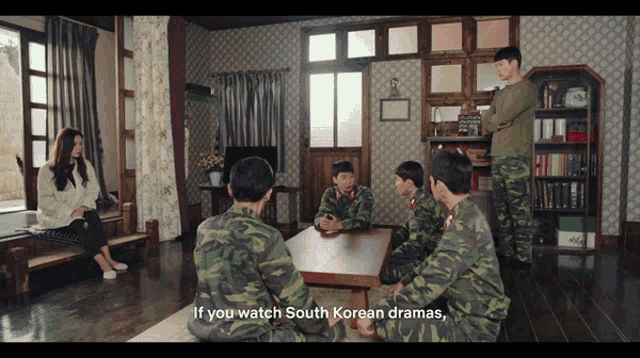
I also really loved A Business Proposal (also on Netflix). It was a silly romcom, but the characters were just so endearing…I also may have developed a huge celebrity crush for the star, Kim Sejeong 👀
4-Character Idiom (사자성어) of the month
Similar to how “carpe diem” comes from English’s Latin roots, 사자성어 come from classic Chinese texts like the Analects, Tao Te Ching, Laozi, or other historical documents, and it’ll be important for me to at least know the common 사자성어 to sound more fluent. I’ve been watching an excellent variety show called 비정상회담 (Abnormal Summit) where 사자성어
4-character idioms are expressions that tell stories or describe metaphorical situations to convey complex information very simply. As an English speaker, it’s like understanding what “carpe diem” means. Carpe diem is a quick and easy two-word Latin phrase that encapsulates a complex meaning…that you should enjoy yourself while you have the chance, take advantage of your opportunities, etc. Similar to how “carpe diem” comes from English’s Latin roots, 사자성어 come from classic Chinese texts like the Analects, Tao Te Ching, Laozi, or other historical documents, and it’ll be important for me to at least know the common 사자성어 to sound more fluent. I’ve been watching an excellent variety show called 비정상회담 (Abnormal Summit) where 사자성어 are frequently used by the foreigners to convey their thoughts more succintly, so I’d like to slowly build up my own repertoire.
고진감래 (goh-jin-gahm-rae), from 苦盡甘來
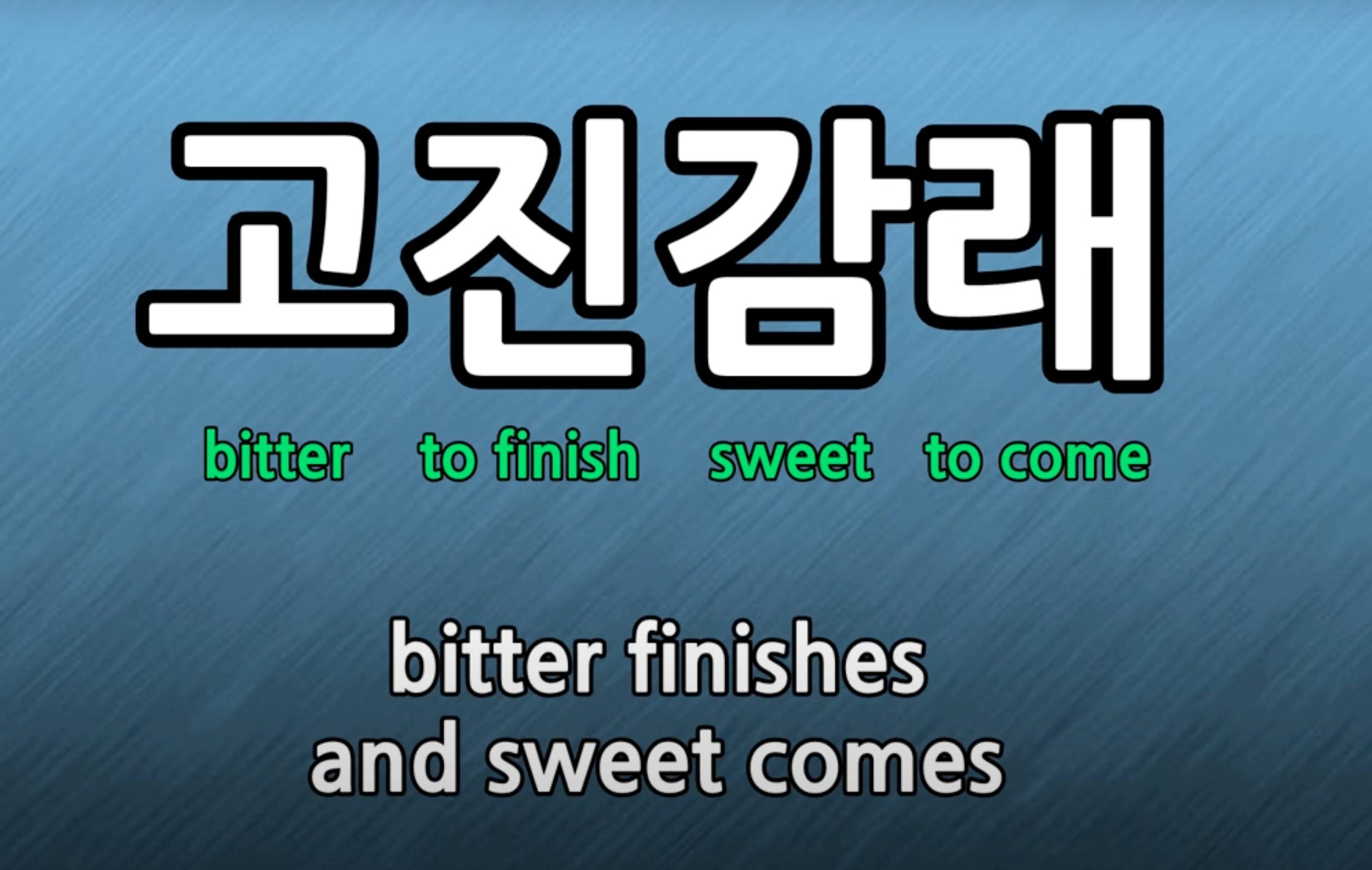
This is literally translated as “sweetness comes after bitterness.” In English, we would say, “good things will come after hard work,” or “no pain, no gain.” I’ll keep this 사자성어 in mind as I study hard before moving to Korea!
Thanks for reading! Feel free to leave a comment or question below :)
그럼 이만 안녕히 계세요.
-Sean